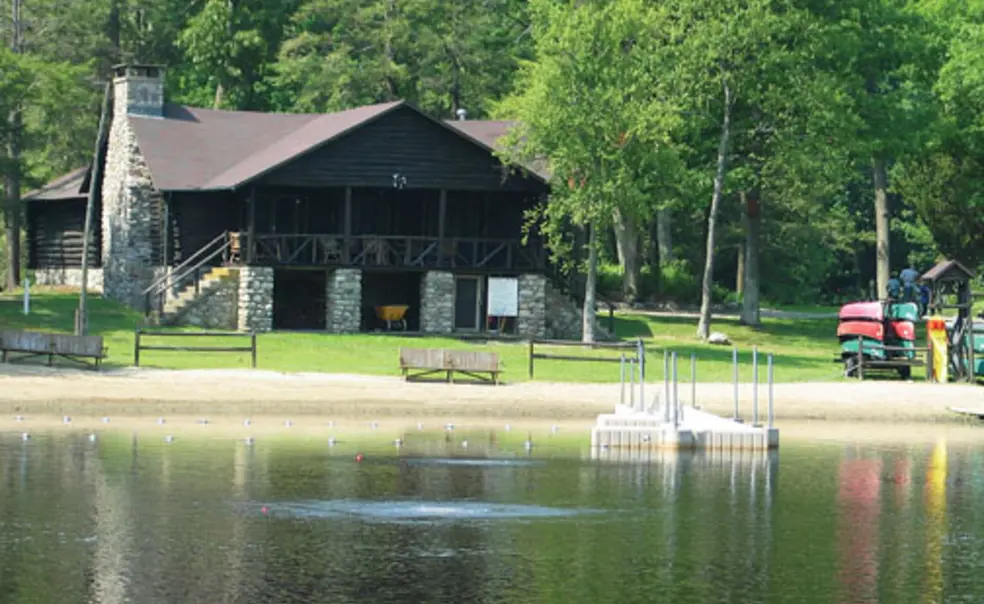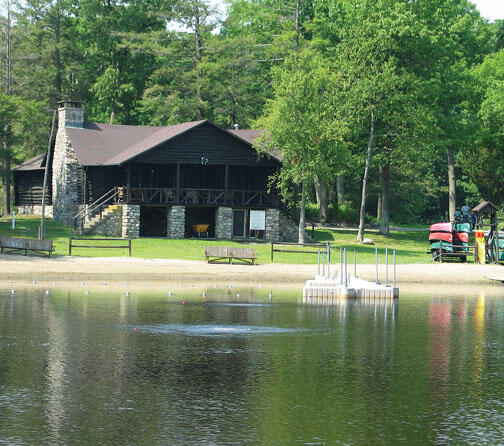Blairstown sets a new course as most Princeton links to end
The University soon will sever most of its financial and administrative ties to the Princeton-Blairstown Center (PBC), an outdoor-education program founded by Princeton students more than a century ago.
The move saddens some alumni who spent their undergraduate years working with low-income children at what was long known as the Princeton Summer Camp, housed on a forested 263-acre property in northwest New Jersey.
But the transition makes sense, given economic realities and Blairstown’s commitment to a mission distinct from that of the University, said Princeton general counsel Peter McDonough. “What we hope is that we’ll be able to help PBC figure out how to, essentially, stand on its own,” McDonough said.
“This is an exciting time for us,” Wardell Robinson-Moore, executive director of the center, said in a prepared statement. “We are serving more students now than ever before, and are looking forward to expanding our programs even more in the coming years.”
The center is analyzing whether its new status will require cuts to programs and staffing in its $1.8 million budget, said PBC board president Janet Smith Dickerson, who retired in 2010 as the University’s vice president for campus life.
The Princeton Summer Camp for low-income city boys was founded in 1908 by undergraduates affiliated with a campus religious society. The camp remained student-run until the 1970s, when it began evolving into a more extensive outdoor-education program. Today, the center has a professional staff and offers year-round experiential education programs to low-income boys and girls, as well as retreats for campus and private groups.
Although Blairstown was always an independent nonprofit organization, historically its informal ties to the University have been close. In 1995, the center became a supporting organization of the University under federal tax law, and the University began appointing a majority of its board members. Simultaneously, the University assigned the center to administer Outdoor Action, Princeton’s experiential-education program.
Currently, many of Blairstown’s 21 employees work out of free office space on campus, and University staff provide the center with accounting, legal, and engineering services. Princo — the Princeton University Investment Co. — manages the center’s $25 million endowment, and the University administers Blairstown employees’ salaries and benefits, although the center reimburses the University for those costs.
By 2009, however, Outdoor Action had grown too large to be administered outside the University, and the global recession was forcing Princeton to cut costs. Undergraduate involvement in Blairstown had been minimal for years, but that wasn’t a precipitating factor in the decision to re-evaluate the relationship, McDonough said.
“For us, it was never an issue about undergraduate students being less involved,” he said. “This was about the fact that Outdoor Action was coming back into the University and that we had to look at all corners of the University’s expenditures as we were dealing with the fiscal crisis.”
After June 30, Blairstown’s supporting-organization status will end. Transition negotiations are ongoing, but McDonough said he expects Princo to continue managing the center’s endowment, while Blairstown takes over other functions long performed by the University. The University will let the center remain in its on-campus offices for a year and, after that, likely will provide new space, he said.
“I think the University will continue to consider PBC an affiliated group, much like it does Princeton University Press or McCarter Theatre,” Dickerson said.
But alumni who love Blairstown fear the University is “forgetting its obligations to the town and the black community,” said Richard S. Peterson ’60, who, as an undergraduate counselor at the Princeton Summer Camp, took low-income boys camping under the stars.
“I’ve been disappointed in the stance of the University,” said David G. Rahr ’60, who ran the camp as an undergraduate and later served as the University’s alumni director. “The University could have been more supportive and more helpful. It’s too easy to say, ‘That’s not our job.’ ”
Rahr, an honorary trustee of Blairstown, said the University should have encouraged the center to pursue creative new directions, perhaps by shifting its focus from funding specific programs to supporting broader strategies to aid urban youth. That extra effort would have honored the spirit of the century-long tie between the two institutions, he said.
“I can’t describe how close and symbiotic the relationship was for the first 70 years,” Rahr said. “It was just extraordinary, and a source of great pride for the University.”
Both Blairstown and the University insist the center will thrive on its own.
“They have a wonderful, wonderful property, and they’re extraordinarily well-endowed,” McDonough said. “And so they’re positioned to do great things.”












1 Response
Toni Bluher *88
9 Years AgoA Blairstown connection
Blairstown (Campus Notebook, Feb. 6) has special meaning to our family. In 1985, the graduate students’ main social event was a weekend at Blairstown. However, the timing was bad (when most grad students were engaged either with teaching or studying for generals), so only six people could make it. Two of those were my future husband and I. Though we were acquainted from classes, Blairstown was how we got to know each other. A year later we married, and two years later our son Andrew ’09 was born. Our two daughters also were Princeton students.